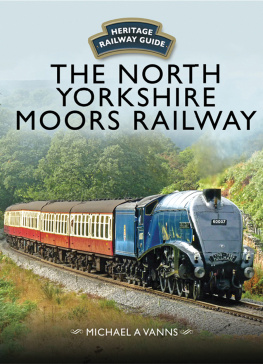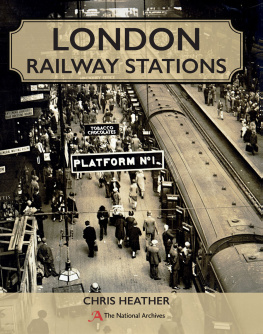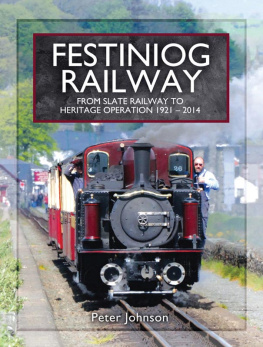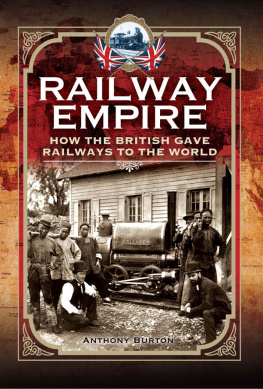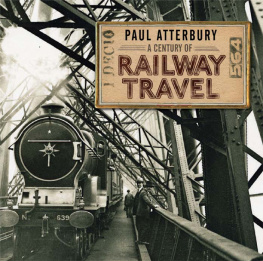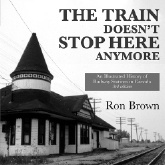
One of the Severn Valley Railways very popular Santa Specials heading purposefully back to Bewdley after an encounter with Father Christmas at Arley Station. (Adrian White)
S EVERN V ALLEY R AILWAY
Michael A. Vanns
First published in Great Britain in 2017 by
Pen & Sword Transport
An imprint of Pen & Sword Books Ltd
47 Church Street
Barnsley
South Yorkshire
S70 2AS
Copyright Michael A. Vanns, 2017
ISBN 978 1 47389 204 0
eISBN 978 1 47389 206 4
Mobi ISBN 978 1 47389 205 7
The right of Michael A. Vanns to be identified as the author of this work has been asserted by him in accordance with the Copyright, Designs and Patents Act 1988. All rights reserved. No part of this publication may be reproduced or transmitted in any form or by any means, electronic or mechanical, including photocopy, recording or any information storage and retrieval system, without the prior written permission of the publisher, nor by way of trade or otherwise shall it be lent, re-sold, hired out or otherwise circulated without the publishers prior consent in any form of binding or cover other than that in which it is published and without a similar condition including this condition being imposed on the subsequent purchaser.
Pen & Sword Books Ltd incorporates the imprints of Pen & Sword Archaeology, Atlas, Aviation, Battleground, Discovery, Family History, History, Maritime, Military, Naval, Politics, Railways, Select, Social History, Transport, True Crime, and Claymore Press, Frontline Books, Leo Cooper, Praetorian Press, Remember When, Seaforth Publishing and Wharncliffe.
For a complete list of Pen and Sword titles please contact:
Pen and Sword Books Limited
47 Church Street, Barnsley, South Yorkshire S70 2AS, England
E-mail:
Website: www.pen-and-sword.Companyuk
Introduction
W orcestershire and Shropshire are neighbours, and for 101 years until 1963 it was possible to travel by train between the two county towns of Worcester and Shrewsbury. For much of the journey, passengers would have been within sight of the River Severn, and it was a company deriving its title from that river that constructed the stretch of railway between Hartlebury and Shrewsbury at the end of the 1850s. This Severn Valley Railway was taken over by the West Midland Railway before the line opened, and a little over a year and a half later it became part of the Great Western Railway (GWR). That Company ran it for almost eighty-five years until all the countrys railways were nationalised in 1948. British Railways continued to run trains over the whole route for another fifteen years before abandoning the section north from Bewdley to Shrewsbury. Fortunately, a new Severn Valley Railway Company was formed by railway enthusiasts and by 1984 they were running steam-hauled trains between Kidderminster and Bridgnorth, having created one of the nations most popular heritage attractions.

A brief stop at Buildwas Junction during the Shropshire Rail Tour of 23 May 1955. In the background are two of the six chimneys of the electricity power generating station. (R. J. Buckley)

Cressage Station as it appeared in the years immediately before the outbreak of the First World War. (Authors collection)
This book provides a brief history of the Severn Valley Railway from its earliest days through to the twenty-first century, providing a guide for all those who love the sight and sound of steam engines making their way through a particularly beautiful part of the Midlands landscape.

Duchess of Sutherland pulling away from the Sterns speed restriction on its way southwards, 21 September 2013. (Author)
Genesis
F or centuries the River Severn was an important trade artery, navigable by various craft from the Bristol Channel as far north as Welshpool to the west of Shrewsbury. In the eighteenth century it was of vital importance in the growth of both coal mining and the iron industry in the East Shropshire Coalfield, an area stretching from Donnington to the north of the river and Broseley to the south. The river provided the best means of exporting coal, pig iron and other cast and wrought-iron products. By the end of the 1750s the largest concentration of blast furnaces in the country was immediately north and south of the river around Broseley and Coalbrookdale. When the Iron Bridge was erected over the river in 1779 to connect these two areas, it became, very appropriately, the symbol of Englands industrial preeminence. Visitors, both legitimate and as spies, came from all over Europe to see it and marvel at the many industries in the vicinity. Even Thomas Jefferson, the third President of the USA, purchased a print of the bridge to hang in his Washington residence.

Benthall viaduct close to the River Severn at Ironbridge, the famous cast-iron bridge just visible in the background. During the summer, when water levels were invariably low as shown here, river traffic almost ceased as boats could not negotiate the shallows. By comparison, a railway was a far more reliable means of transport whatever the weather. (Ironbridge Gorge Museum Trust)

Detail of an Edwardian postcard of the Iron Bridge looking east. To the right is Ironbridge & Broseley Station, on the opposite side of the River Severn to the town it served. In the background is the Free Bridge, opened without a toll in 1909. The chimney in the foreground marks the site of a brickworks. (Commercial postcard/authors collection)
The industrialists in the East Shropshire Coalfield were also responsible for ground-breaking improvements in the way goods were moved between where they were made and the river. One of the earliest references to a railway appears in a legal document of 1605 that mentions a line of rails between Broseley and the River Severn. In the 1720s, the Coalbrookdale Company cast the countrys first iron wheels and then began to lay cast-iron rails to replace wooden tracks in the 1760s. At the end of the century another form of railway was introduced into the area, often referred to as a plateway, on which the wagons wheels were guided along the line by a continuous upright flange on each rail. Horse-drawn railway lines and plateways of various gauges criss-crossed the coalfield, linking mines, quarries and ironworks on both sides of the River Severn. The reputation of the area for its railways, and the casting and finishing of precision parts for Boulton & Watt steam engines attracted men such as Richard Trevithick, who in 1802 had the Coalbrookdale Company construct the very first steam engine designed to run on rails plateway rails. Sadly, this engine did not receive the same publicity as his Penydarren engine that ran successfully two years later. Trevithicks involvement in Shropshire, however, did not end with the Coalbrookdale engine. In 1808 he returned to Bridgnorth where at Hazeldines Foundry his last railway locomotive was built, destined to be considered little more than a fairground ride, when as Catch-me-who-can it ran on a circle of track close to where Euston Station would later be located in London.


